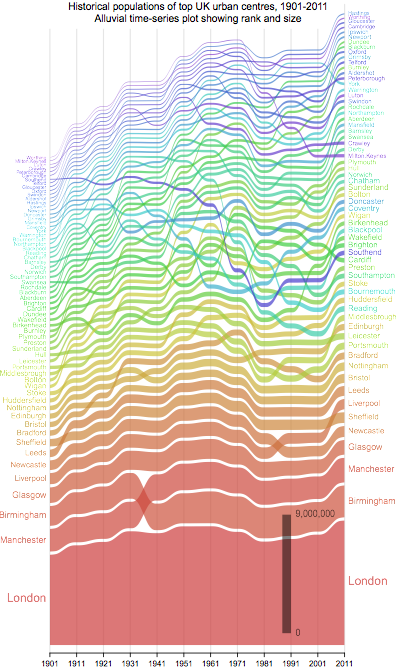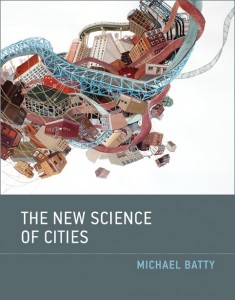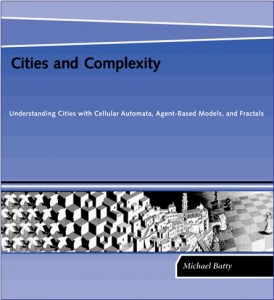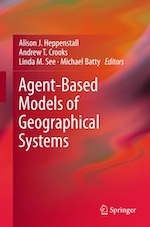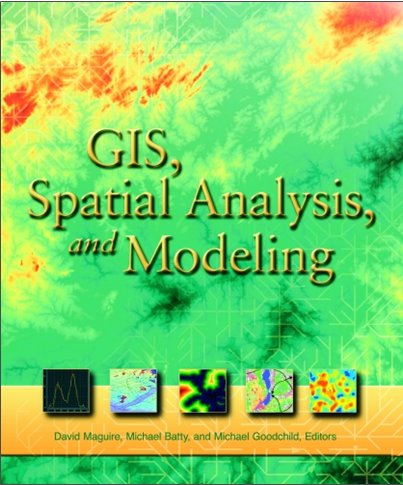Our paper on London’s street network has been picked up by various blogs and tweeted as well by Steve Strogatz. The paper “Multifractal to monofractal evolution of the London street network” by Roberto Murcio, Paolo Masucci, Elsa Arcaute, and myself (Michael Batty) was published in Physical Review E 92, 062130 on December 17, 2015. You can get it here. We have done several papers on London’s street network using Kiril Stanilov’s data but this recent paper takes the analysis a lot further and introduces multifractals which is something that was on the horizon 25 years ago when Paul Longley and myself were doing the Fractal Cities book but we never did anything on it. Now in CASA Hadrien Salat is working on multifractals for his PhD and this is accelerating our knowledge of how morphologies and cities vary in time and space.
Fractal London
City size: Spatial dynamics as temporal flows
Robin Edwards and myself have improved our visualisation of city size and rank over time and this is now published as a featured graphic in Environment and Planning A in their forthcoming material. It is quite hard to represent three variables in a two-dimensional plot but here Robin and myself use an alluvial diagram similar to a Sankey-type diagram to achieve this which we think encapsulates rather well the way in which cities change not only their rank but also their size over time. Rank and time are unidimensional, integer quantities in our representation while size is continuous volumetric and the graphic we have used captures this rather nicely. I have posted bits of this before but if you click on this link you will get the forthcoming graphic which is in fact free currently at the journal web site. Have a look at our two previous posts to full in all the detail about this. Enjoy
Cities and Ideas
The notion that cities produce ideas goes back to the time when cities first emerged from our nomadic existence. Indeed it appears that human ‘progress’ through development is centred around the production of new ideas or at least the evolution of old ones and this takes place in primarily in cities. In the last 100 years, there has been the notion that as cities get bigger, the ideas that their occupants produce, get more than proportionately greater and this force suggests that bigger is better, reflecting itself in increasing wealth and creative pursuits. Marshall called this ‘agglomeration economies’ in his writings and argued that the proximity of individuals in an urbanised population would give rise to interaction effects that increased their production (of ideas) by a factor more than the size of population itself. If the number of ideas increases as the number of possibilities for interaction, this is the square of the population size. But there are bounds on this interaction – in a large city of a million, an individual cannot relate to everyone else whereas in a village of 100, they can. In general, there appears to be a weak force proportional to city size for generating more than proportionate returns to scale or agglomeration economies. This suggests that income or creative pursuits increase slightly more than proportionately than population as cities get bigger, that is, by population raised to a power greater than 1 but nothing like as large as 2. This is referred to in allometry as superliner scaling, with the main advocates of this approach and its validation being Luis Bettencourt and Geoff West from the Santa Fe Institute as published in their PNAS paper in 2007.
In a global world, there is some doubt about how strong is this weak force. Cities are hard to define and there is much debate about their size and shape. Density might be a better measure than population size as this includes the extent to which individuals can be packed together, and then of course, as the world becomes a global pattern of electronic communications, then what are local spatial forces may well be weakening further still. We have speculated that these are issues in our not being able to reproduce the West-Bettencourt results for the US in the UK as we discuss in our own paper on this subject. However now comes another paper that suggests that this force for agglomeration is weakening. Packalen and Bhattacharya in an NBER paper called Cities and Ideas use a data base for the US from 1830 to 2010 where they reconstruct patents from key concepts and in regressions of these data against population density, show that the superlinear force is weakening through time. This they imply is equivalent to what Marshall wrote in the 8th edition of his book Principles of Economics in 1920, and I take the quote from their paper, about the fact that agglomeration economies might weaken. He said: ‘Every cheapening of the means of communication, every new facility for the free interchange of ideas between distant places alters the action of the forces which tend to localize industries’.

